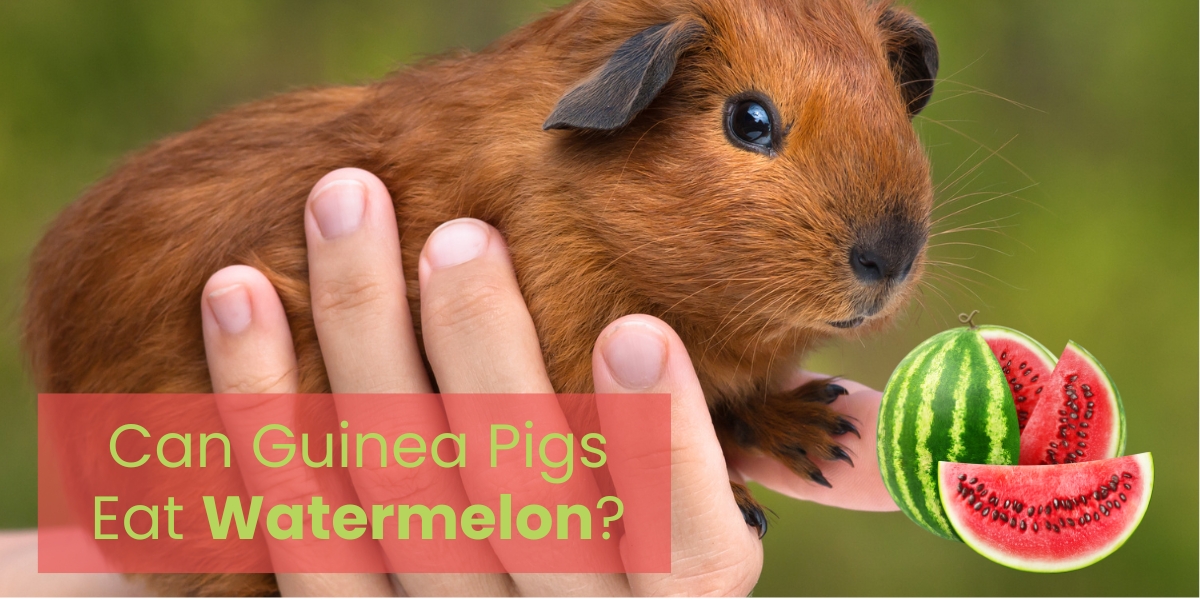Watermelons – the refreshing, juicy, and tantalizing summer treat that many of us love. But if you’re a guinea pig owner, you might be wondering, “Can guinea pigs eat watermelon?” Dive into this comprehensive guide, and let’s find out!
Introduction to the Guinea Pig’s Diet
Guinea pigs have a specific diet that primarily consists of hay, but they also enjoy a variety of fruits and vegetables. Like us, they enjoy indulging in a sweet treat now and then. But are all fruits safe for these adorable rodents? Let’s specifically look at watermelons.
Can Guinea Pigs Eat Watermelon?
Guinea pigs can eat watermelon. In fact, many guinea pigs love the juicy delight that watermelon provides, especially during hot days. But, as with anything, feeding it to your guinea pig should be done with care and knowledge.
The Juicy Details
Watermelon is packed with hydration, vitamins, and minerals. These health benefits include vitamin C, which is essential for guinea pigs as they can’t produce it naturally. But, on the flip side, watermelons also come with a high sugar content. And guess what? Large amounts of sugar aren’t great for your furry friend.
So, how much watermelon can a guinea pig eat?
A small amount once or twice a week is just right. Think of it as a treat, not a staple in the guinea pig’s diet.
What About Watermelon Rinds and Seeds?
You might be munching on a piece and wonder if pigs eat watermelon seeds or if guinea pig watermelon indulgence can extend to the rind. Here’s the scoop:
- Seeds: They could be a choking hazard. It’s safer to avoid giving them seeds entirely.
- Rind: Surprisingly, guinea pigs can eat watermelon rind. However, pigs eat watermelon rind only in moderation. It’s harder and can be a bit tough for them to chew, but it’s not harmful.
Can Guinea Pigs Eat Melon Skin?
While we’re on the topic of watermelon, it might make you wonder about other melons, like cantaloupes. Guinea pigs can eat melon skin, but again, moderation is key. Make sure it’s cleaned properly to remove any pesticides.
Beware of the Forbidden Fruits!
Now, while watermelons get a green light, some fruits are poisonous to guinea pigs. Here’s a brief list:
- Avocadoes
- Onions
- Grapes and raisins (debated, but better to avoid)
- Rhubarb
Remember, it’s always essential to do a quick check before feeding any new fruits and vegetables.
Fruits Guinea Pigs Absolutely Love
While watermelons are a hit, guinea pigs also have other favorites. These include:
- Strawberries
- Blueberries
- Tomatoes (technically a fruit!)
- Cucumber
In Summary
Alright, let’s wrap this juicy conversation up!
- Guinea pigs can eat watermelon, but only in moderation due to its high sugar content.
- Avoid the seeds, but feeding watermelon rinds is okay in small quantities.
- Always be cautious and ensure your pet’s food is free from pesticides or harmful chemicals.
- Not all fruits are guinea-pig friendly. Always research before introducing something new.
So, the next time you’re enjoying a slice of watermelon on a hot day, remember that you can share it with your furry friend. After all, who can resist those begging eyes?
FAQs
Guinea pigs adore fresh fruits and vegetables as snacks, with treats like strawberries and bell peppers being top favorites. However, these should be given in moderation due to sugar content.
The staple and most-loved food for guinea pigs is high-quality timothy hay, which aids in digestion and provides the necessary nutrients.
Guinea pigs should avoid foods like chocolate, caffeine, dairy products, potatoes, and rhubarb. Certain fruits and veggies, such as onions and avocadoes, are also toxic to them.
Guinea pigs have a penchant for leafy greens. Romaine lettuce, bell peppers, and cucumber are among their top vegetable picks.
Yes, guinea pigs can eat bananas, but due to the high sugar content, it’s best offered as an occasional treat and not a regular part of their diet.

